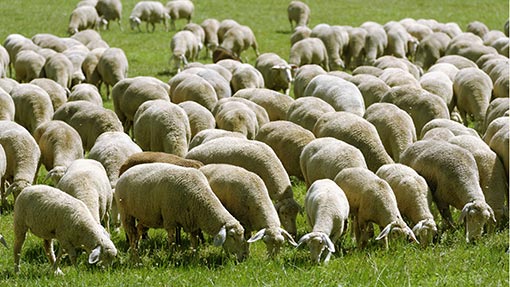Maedi visna infections in sheep on the increase

Vets are appealing to sheep farmers to be alert to the increasing threat of the killer viral disease maedi visna.
Specialists working within Scotland’s Rural College (SRUC) say a high level of infection of the incurable disease has been found in some flocks.
And there is evidence of infection increasing throughout the sheep population, including in Wales and southwest England.
Maedi visna facts
- Caused by a highly contagious virus
- No cure or vaccine and is fatal
- Symptoms in lambs include increased lamb mortality, decreased growth rates from reduced colostrum intake, reduced fertility and increase in culling rates
- Symptoms in adults: sheep do not normally show signs until they are adults, as the virus has a long incubation period. The main clinical signs are paralysis, wasting, arthritis and chronic mastitis
- Transmitted by shedding of the virus in milk, colostrum, faeces and respiratory secretions, contaminated water or feed when uninfected sheep are housed or at pasture with infected sheep
Among samples recently submitted for analysis to the college’s veterinary services, in one flock 11 out of 12 ewes tested positive and in another 41 out of 48 were positive.
“Producers cannot afford to be complacent and underestimate the risks of the disease,” said Ian Pritchard, SRUC health schemes manager. “It could have a severe effect on the productivity and economics of their sheep systems.”
Maedi visna derives from two Icelandic words, which describe the main clinical signs of pneumonia and wasting.
It is a chronic disease of sheep caused by a retrovirus and was introduced into the UK through imported animals.
The disease is notoriously difficult to diagnose, but symptoms include weight loss, pneumonia, poor body condition, poorer fertility, mastitis, arthritis and hind limb paralysis.
Read also: Maedi visna sheep losses double
Statistics from veterinary laboratories in England, Wales and Scotland show an increase in outbreaks.
Several larger flocks have encountered the disease to their cost, including one flock with 8% ewe mortality, a high cull rate due to mastitis and poor condition resulting in a high net replacement cost, and lambs often with poorer growth rates.
Another large flock has estimated the cost of a 20-40% reduction in flock productivity, predominantly due to maedi visna, at between £30,000 and £50,000.
The SRUC advises sheep farmers to take precautions seriously. At a basic level they should ensure boundary fences are secure to avoid contact with other flocks.
Any new sheep brought to the farm should be quarantined and tested before they join the main flock. It is also important to investigate any cases of ill thrift in ewes.
“A group of 12 poorer, thin ewes can be blood tested for evidence of the disease,” said Mr Pritchard. “But, where possible, it is far better if flockmasters ensure they buy in any breeding replacements from MV-accredited flocks.”
The Maedi Visna Accreditation Scheme, run by Premium Sheep and Goat Health Scheme, has more than 2,600 members who test their sheep on a regular basis following the rules and conditions of the scheme.
Mr Pritchard recommends that anyone selling breeding sheep should consider joining the accreditation scheme, as customers may want reassurance they are not buying in maedi visna.
